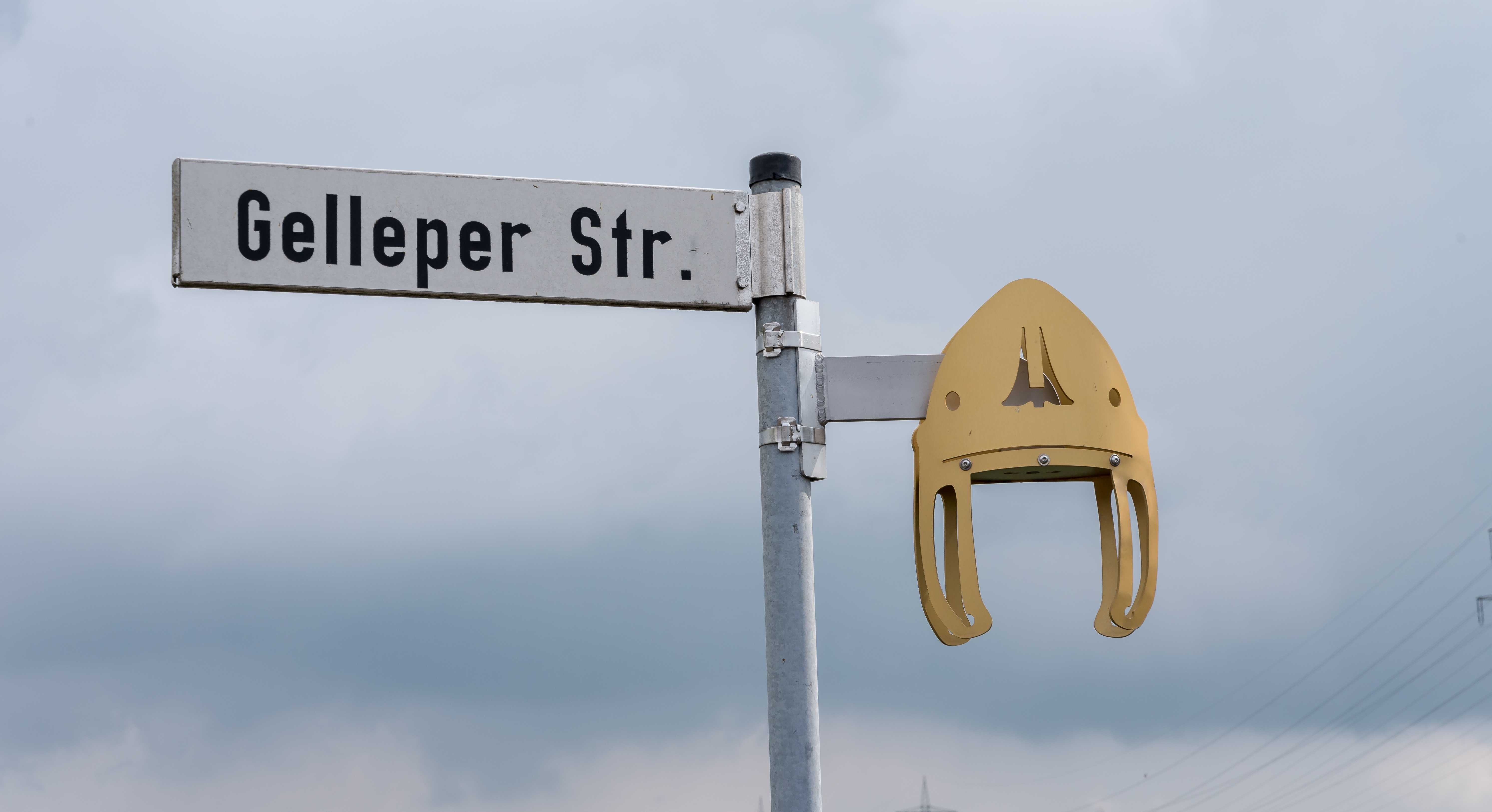Krefeld-Gellep

A helmet on a street sign indicates the area once occupied by the military camp.
Several remarkable archaeological discoveries have been made at the Roman auxiliary camp at Gelduba. This section of the Lower Germanic Limes UNESCO World Heritage site includes the area of the military camp and parts of a marching camp and battle field, both dating from the Batavi Revolt which took place in 69/70 AD. The camp was initially made of mud and wood, or half-timbered structures, and subsequently extended and improved. It also housed a cavalry unit. The structural remains of the camp survive well preserved underground, however not visible above ground.
Access: public and private
Note:
The archaeological remains that make up the Lower Germanic Limes (NGL) UNESCO World Heritage Site are all very well preserved. Most of these structures are buried underground and well protected. Some are visible above ground. So far, there is very little on-site information explaining the history and significance of these finds. We are currently working on a comprehensive package of information and presentation resources to promote public understanding of these sites.
